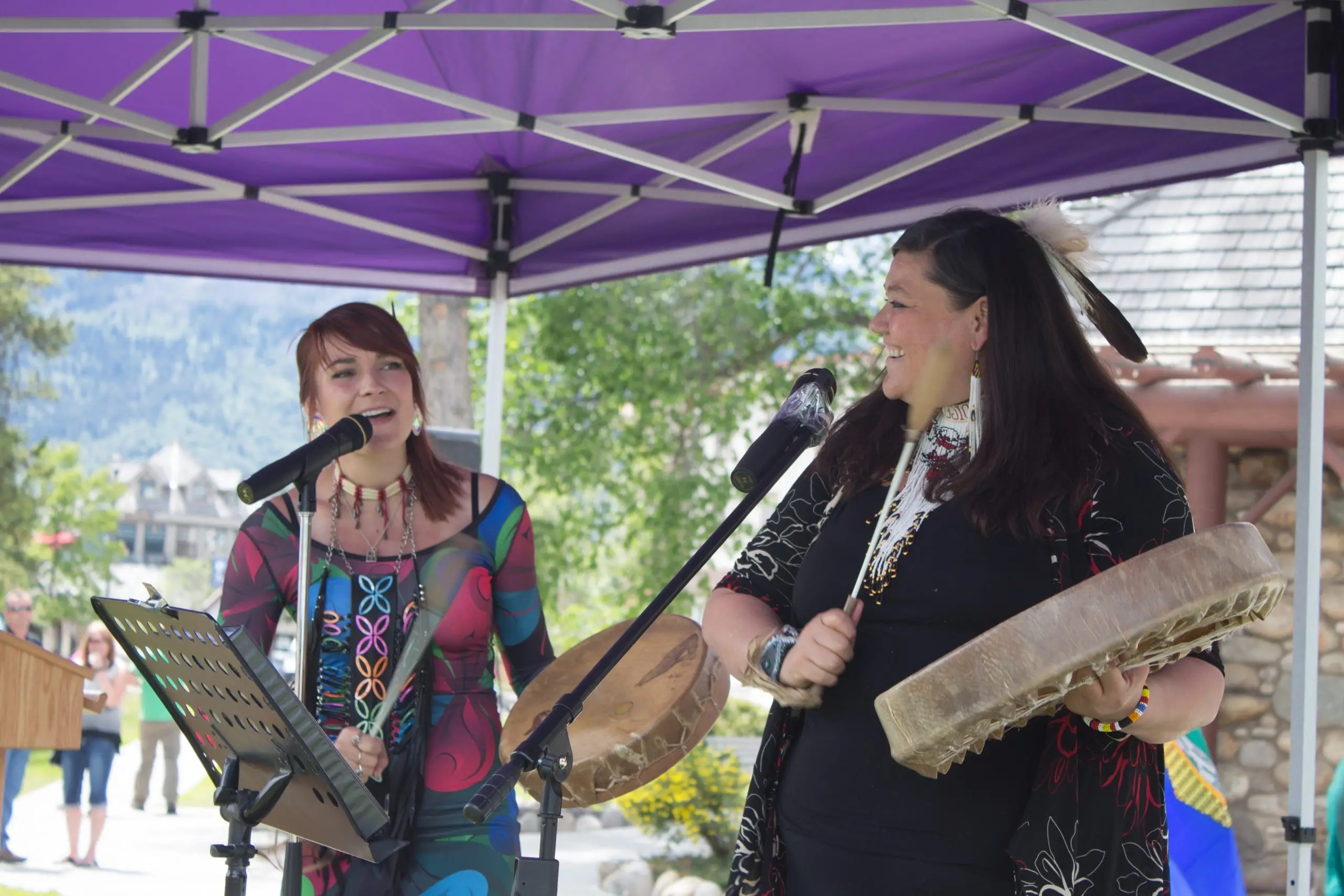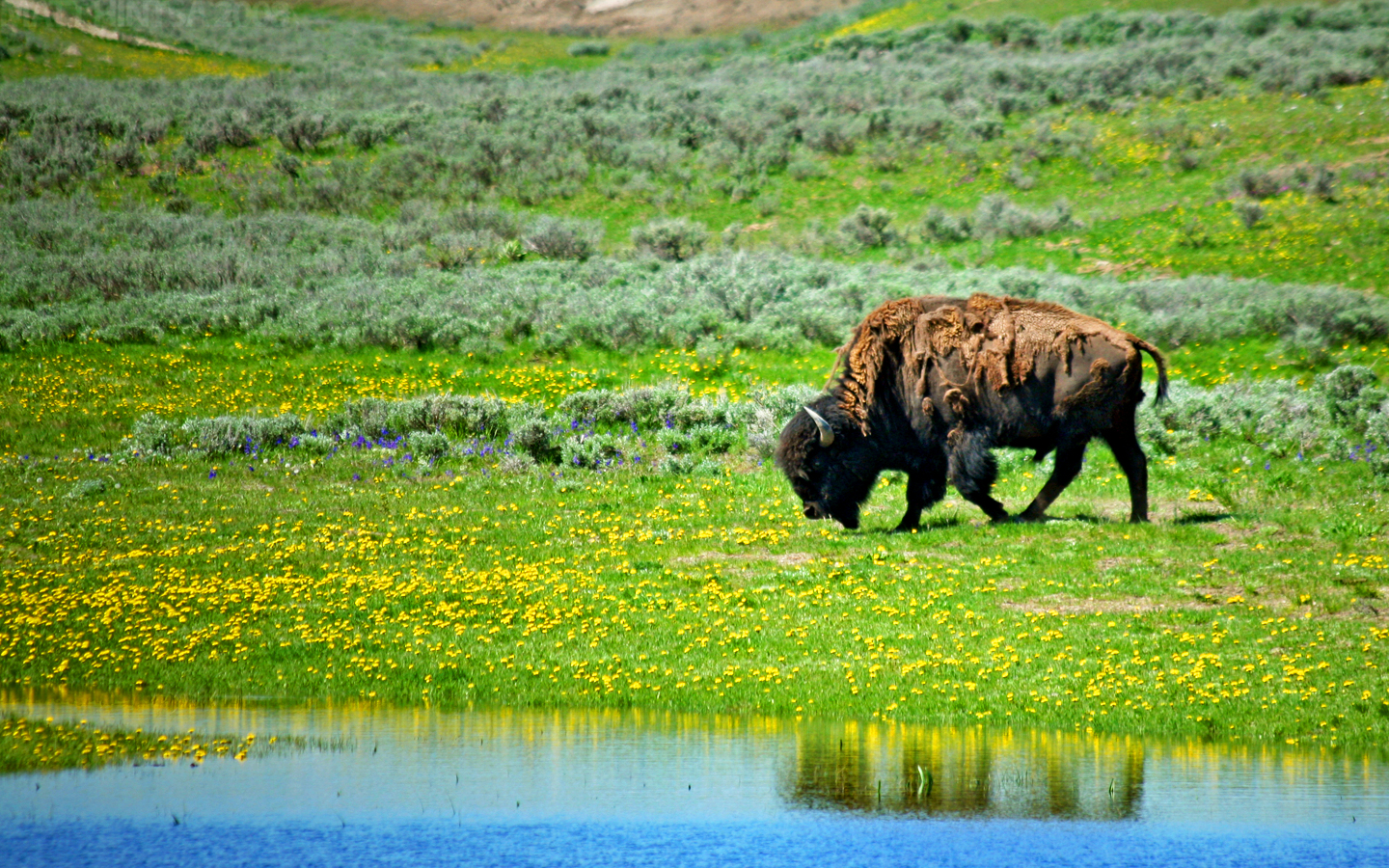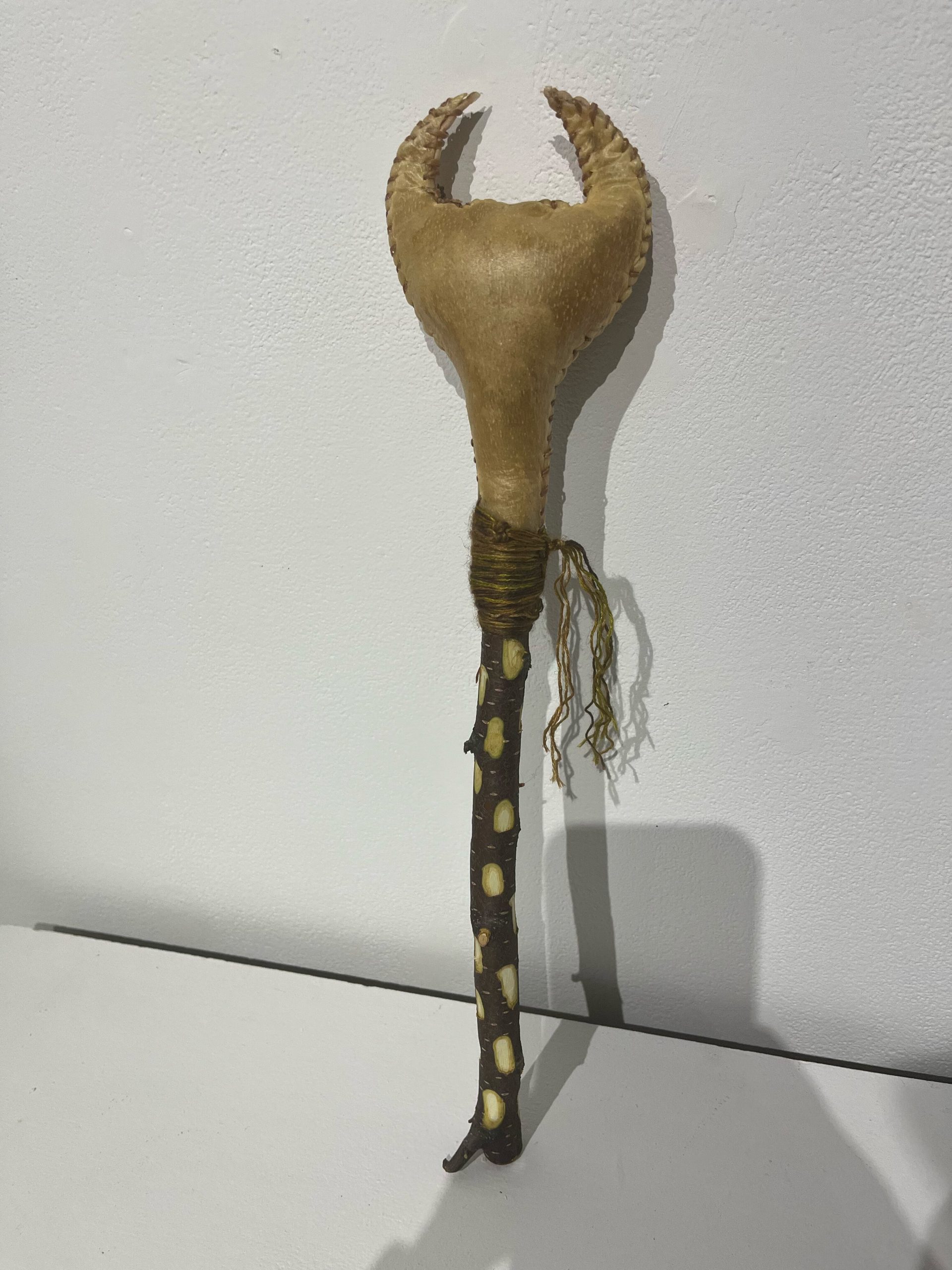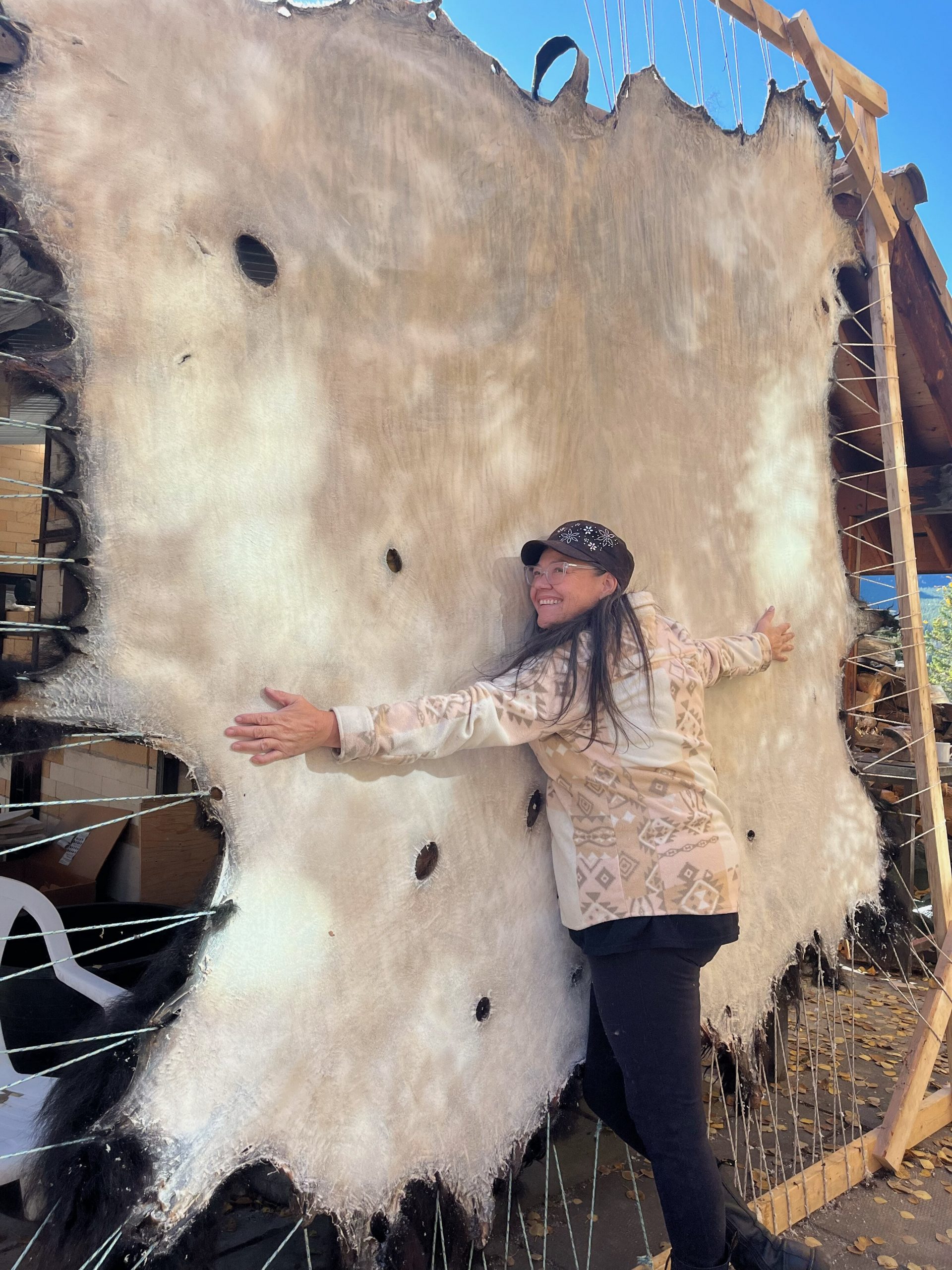To members of the Cree Nation, the buffalo has deep and significant spiritual meaning.
“At a core level, the Cree people in Alberta were buffalo people,” says Jasper’s Matricia Bauer. “Buffalo was their food, their celebrations, their instruments, their tools, their way of life.”
But even though her own life as a knowledge keeper and storyteller is centred around connections to Cree culture, until she took up residency at the Banff Centre recently, Bauer hadn’t spent any time considering what the buffalo represents to her.
“The government has done a pretty good job of colonizing us,” she said when asked to consider that particular crevice between her ancestors. “And I guess I’ve done a good job of colonizing myself.”

Bauer is a Sixties Scoop survivor. She was one of thousands of Indigenous children in Canada removed from their families to be raised by non-Indigenous families. As an adult, Bauer has reconnected to her heritage, and today as an Indigenous educator operates Warrior Women, an organization which aims to “Indigenize the world” through workshops, performances and plant walks.
But spending 21 days at the Banff Centre was an opportunity to further decolonize her psyche, she said.
“It was nice to be back in the boots of a student,“ she added.
The conduits which allowed her do that inner reset were twofold: Firstly, as one of seven other Indigenous artists at the Banff Centre residency, she was able to tap into a shared community, and exchange traditional knowledge and skills. And secondly, she tapped into the power of paskwâwi-mostos: the buffalo.
“I thought [the residency] would be more about traditional practices and processes, but it was more about the relationship with the buffalo,” she said.

Navigating that relationship was neither easy nor expected. When she first saw the buffalo hide that she and the group were slated to tan, Bauer was instantly overwhelmed.
“When they rolled it out I just thought ‘oh no, that’s so big,’” she laughed.
Bauer had experience tanning hides, but she still couldn’t fathom the amount of physical work which would be required to scrape the buffalo hide clean of its membranes and hair. For hours each day, Bauer scraped. By the end of each session, she could barely lift her arms. Her back ached and her hands were cramped. And the pitiful progress made from her monumental efforts simply ticked her off.
“I would get mad,” she said. “You would stand there scraping for four to eight straight hours. It breaks you down mentally, physically, emotionally.”
Hitting a low point, suddenly, one day, Bauer noticed the Banff Centre was abuzz with activity. The reason for the heightened energy was a visit from a group of Indigenous seniors—elders from the Bow Valley community of Mini Thni were being toured around campus. When they saw the hide, Bauer said, the elders were immediately drawn to it. By turn, the aunties and uncles picked up unclaimed scraping tools, helping to dress the hide. It was a revelatory moment for Bauer.
“I realized it’s not something meant to be done alone,” Bauer said. “It’s meant to be done together, with community.”
The shared experience buoyed Bauer and her fellow artists in residency. They soon completed the scraping and tanning process, and from the hide created drums, rattles, parfleches and other tools.

A secondary exchange of knowledge came when the artists—whose collective mosaic included representation from the Māori people, the Ute from Colorado, the Lakota, and several other First Nations across Canada—shared their traditional forms.
Bauer demonstrated fish scale jewelry-making and caribou hair tufting. In exchange, she was taught horse hair wrapping, porcupine quilling, moose hair embroidery, and making leather from fish skin.
“I learned how to carve tools out of moose bone,” she said. “That blew my mind.”
Ten weeks after wildfire destroyed parts of her community, Bauer’s mind welcomed the outside stimulation. Because the fire torched any fall performances and workshops she had booked, a freed-up schedule allowed her to go into the residency with necessary focus. But like many of her friends and neighbours, she was also feeling very vulnerable.
“I went into it like a lot of Jasperites after the fire—fractured, confused and beat down,” she said.
The physically-demanding hide tanning process broke her body down even further, but by the end of the three weeks, she had not only had stronger arms and shoulders, but a clearer head and a fuller heart.

The biggest lesson she learned? To be open to the teaching in the first place.
“It reminded me that as much as I share my culture, I still have a massive amount to learn, and other people have a lot of gifts to share,” she said.























No comments:
Post a Comment
Please: Share your reaction, your thoughts, and your opinions. Be passionate, be unapologetic. Offensive remarks will not be published. We are getting more and more spam. Comments will be monitored.
Use the comment form at the bottom of this website which is private and sent direct to Trace.